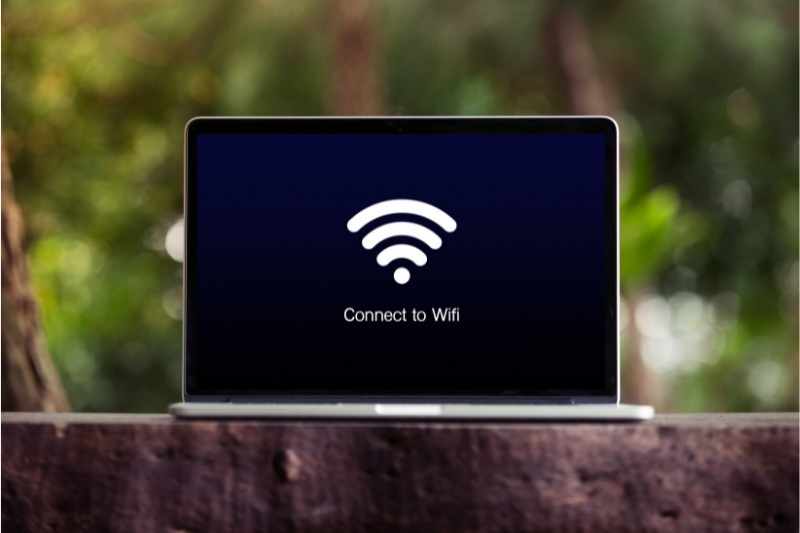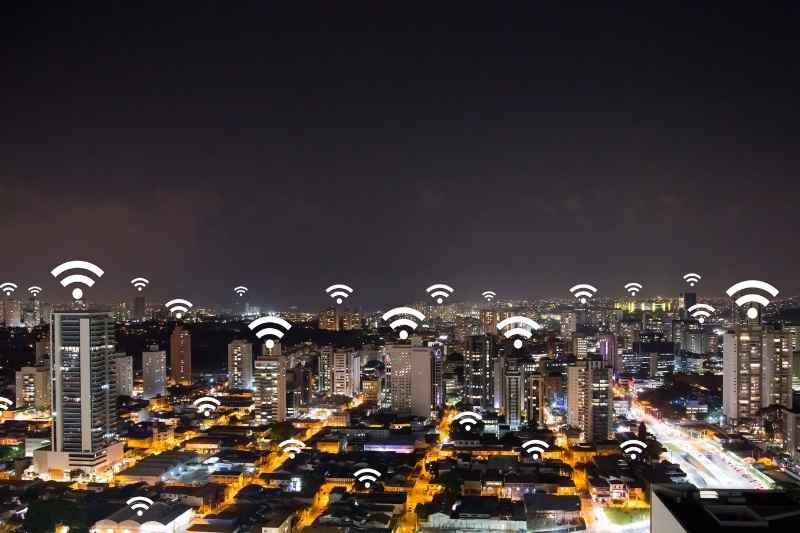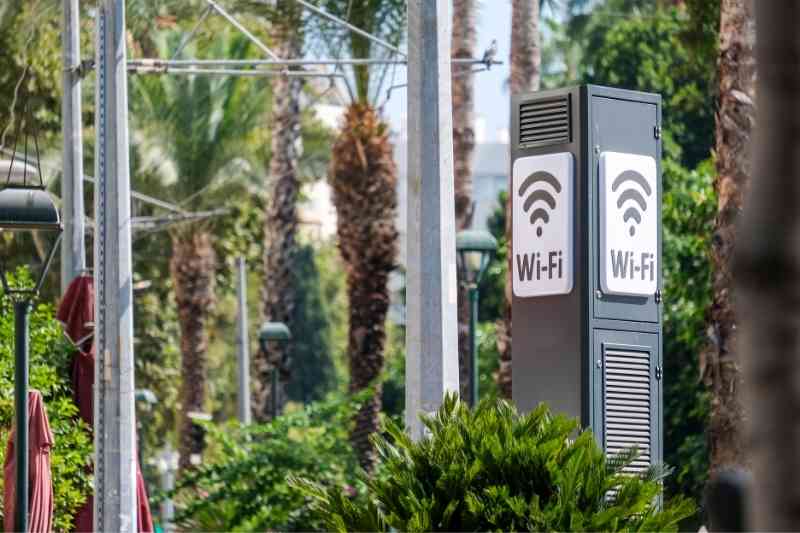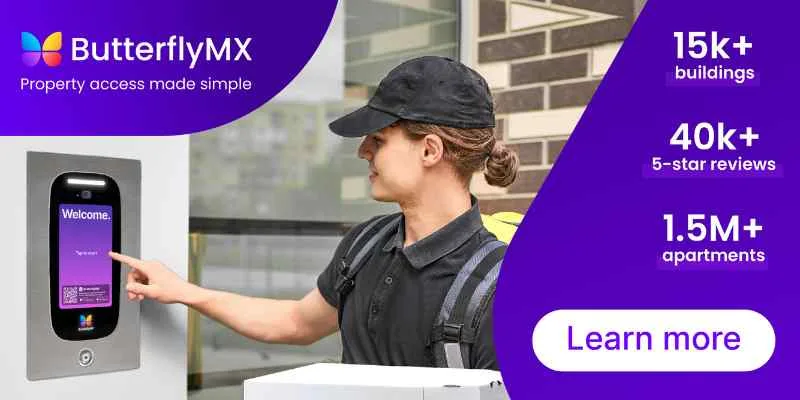Key takeaways
- State-of-the-art technology is the newest trend in apartment amenities. And managed WiFi is among the trendiest technological amenities.
- Managed WiFi is a cloud-based internet network that’s controlled by a third-party internet service provider (ISP).
- Among the top benefits of community-wide internet are scalability, reliability, preventative security measures, and cost-effectiveness.
- Like every amenity, managed WiFi has some drawbacks. But choosing a reliable community internet provider ensures you’ll reap all of the benefits of cloud-based WiFi without any of the concerns.

Today, residents expect more from their apartment buildings. In addition to comfort amenities, they want a tech-enabled lifestyle. As a property manager, one of the best apartment amenities you can provide is fast, reliable, and secure internet. Managed WiFi is one way to offer this amenity.
Plenty of multifamily properties have already begun offering managed WiFi to residents. But is it the best choice for your property?
Continue reading our guide to discover what managed WiFi is, how it works, and its pros and cons. After reading this post, you’ll have all the information to decide whether community-provided WiFi is the right choice for your property.
This guide covers:
- What is managed WiFi?
- 7 benefits of managed WiFi
- Drawbacks of managed WiFi
- Top 3 managed WiFi providers
What is managed WiFi?
Managed WiFi is a cloud-based WiFi network that’s controlled by a third-party provider. Because it has many access points, community internet services can handle many devices at once. This is key, especially considering the growing popularity of residents working remotely, which requires fast, secure internet access. As a result, building-wide internet access has become a necessary technological amenity.
Unlike unmanaged WiFi, which requires an on-site IT team, an off-site third party handles community-provided WiFi almost entirely. This means that your internet service provider (ISP) is responsible for the maintenance of the WiFi connection, security issues, troubleshooting, and upkeep. In turn, this frees your staff from addressing residents’ internet problems.
Let’s take a look at some of the key differences between managed and unmanaged WiFi:
7 benefits of managed WiFi
We’ve covered the key difference between managed and unmanaged WiFi for apartments, but you might still be wondering what specific benefits community internet offers.
Here are the top seven benefits of managed WiFi:
- Reliability
- Scalability
- Security
- Cost-effectiveness
- Preventative measures
- Upgraded functionality
- Time-saving

1. Reliability
There’s no worse way to turn residents against your property than by having a slow, spotty internet connection! However, with a managed WiFi network, how you handle internet interruptions is significantly improved.
Instead of relying on an in-house IT department to diagnose and treat the issue, community Internet hands responsibility over to an ISP.
The best providers offer 24/7 technical support to troubleshoot and fix problems remotely. What’s more, most ISPs have monitoring practices in place to detect and prevent outages early — sometimes even before your residents notice!
2. Scalability
One of the more unique benefits of managed WiFi is that it grows with your property. In fact, with community internet, you can add WiFi extenders or extra access points. This will boost the internet connection in areas of your building with poor signals.
Apartment-provided WiFi empowers property managers to provide hundreds of access points, ensuring your residents never experience online interruptions. Further, if you manage a highly populated building, such as a student housing property, scalable WiFi is a must.
Adding access points is simple! Contact your ISP to add new access points wherever your building needs one. They’ll handle the rest.
Learn the 8 best apartment amenities for your multifamily building:
3. Security
Robust security is one of the main focus areas for ISPs that offer managed WiFi. Unmanaged WiFi requires you to constantly upgrade your service as more secure options become available. Meanwhile, community internet puts this responsibility in the hands of trained professionals, so you don’t need to lift a finger.
More specifically, ISP security professionals:
- Authenticate connections.
- Set up secure admin controls.
- Monitor networks for potential security breaches.
Note: Do your due diligence while carefully researching ISPs to ensure you choose one that practices ethically. Be aware of providers that have lackluster security and privacy measures.
4. Cost-effectiveness
It’s true that the initial cost of setting up an apartment-provided WiFi network for your building is higher than offering unmanaged WiFi. However, over time, the costs for unmanaged WiFi will add up. At the end of the day, you’ll immediately see the return on investment of equipping your property with community internet.
Going with community internet will cut costs related to maintaining an on-site IT team to manage and troubleshoot internet issues. Additionally, managed WiFi services give you access to cybersecurity professionals, meaning you won’t have to pay extra to outsource specialists.

5. Preventative measures
Not only do managed WiFi providers increase security and immediately troubleshoot issues, but they also have preventative measures in place that fix problems before they occur!
Providers use the latest tools to constantly monitor and report on connectivity. As a result, network reliability, speed, connectivity, and security are always monitored. So, if any breaches or outages occur, your ISP will troubleshoot and solve the problem.
Further, the best apartment-provided WiFi networks collect and store performance data. For example, you can see how WiFi is being used at your building and how and when outages occur. This way, ISPs can implement new protocols to prevent those outages.
6. Upgraded functionality
Your residents have unique internet needs! So don’t just offer a one-speed-fits-all WiFi solution. Instead, cloud-based WiFi offers a wide array of speed options. This system allows residents to choose a plan based on their unique needs.
For instance, you can charge residents a small flat rate for a standard internet connection. Then, you can charge a higher fee for residents who want a faster connection.
7. Time-saving
Today, convenience is everything. And with managed WiFi, you can offer residents convenience through technology.
By offering community internet, prospects will never again have to ask if their apartment is WiFi-ready. Instead, you can guarantee that WiFi is readily available on move-in day, transforming a stressful move-in process into a smooth one.
Drawbacks of managed WiFi
While community internet comes with an expansive list of benefits, it’s not without some drawbacks. The most notable disadvantage is that you lose control over your property’s WiFi service.
By offering apartment community-provided WiFi, you must rely heavily on a third-party provider if any issues arise. This may cause some concern among residents who worry about their data privacy and security. However, the best and most reputable managed WiFi providers have state-of-the-art security protocols to protect your residents’ data.
So, it’s imperative that you thoroughly research managed WiFi providers before choosing the best one to protect the security and privacy of your residents.
Top 3 managed WiFi providers
Are you considering purchasing managed WiFi service for your apartment building? Narrowing down your options may be daunting, but we’ve gathered the top three cloud-based WiFi providers.
Top three managed WiFi companies:
- Spectrum: Spectrum provides installation, remote maintenance, and 24/7 technical support. They offer speeds from 5 Mbps (megabytes per second) to 10 Gbps (gigabytes per second). Further, some plans even come with a dashboard for property managers to view WiFi metrics, including speed, security, and connected health.
- Dish: In 2019, Dish launched Dish Fiber, a managed WiFi service created specifically for multifamily communities. Additionally, they cater to buildings with 60+ units and allow residents to activate WiFi on move-in day.
- Cox: Cox Business offers WiFi solutions with speeds up to 100 Gbps. What’s more, with an allowance of up to 150 WiFi access points, Cox’s community internet can guarantee reliable, high-speed internet coverage to nearly 1 million square feet.







